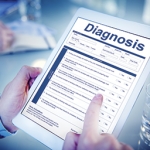In order for a physician to be reimbursed for his or her services, those services must be documented. Your documentation should be able to stand on its own; it is your story of the visit. Just imagine if the news reported, “two people found dead” and nothing else. You would want to know who, when, where, and possibly why. A good news story gives all pertinent information, and your documentation should do the same.
Every year, rheumatologists lose thousands of dollars because of insufficient documentation, and understanding what you should and shouldn’t do will help you prevent this loss.
DO Use Templates to Assist in Documentation
The history and exam portions of are often where rheumatologists are lacking in their documentation. When reaching the history level, there are three components you have to touch on: history of present illness, review of systems, and past family and social history. Many times, physicians will not document the past family and social history. This will automatically mean the history cannot be graded higher than “expanded problem focused.” Having a template will help to remind the rheumatologist to document everything.
DON’T Misuse Templates
Don’t let templates make your practice complacent. Each visit should not be the same because each patient is not the same.
DO Sign and Date Every Entry
Each page of the medical record should contain the patient’s name or identification number. Each author should be identified on each entry, and all entries should be dated. Also, make sure the documentation is legible to someone else besides the author. If these rules are not followed, there is a risk that the medical records could be disregarded, leaving no support for medical necessity of the encounter.
DON’T Change a Medical Record
Don’t try to replace or add any information to medical records as if it was there in the beginning. If something needs to be added to the records, the date and explanation should be clearly noted to as why the addition was made.
In the end, the good documentation of each encounter is the only tool used to determine what happened during the physician’s services. Your documentation should be clear, concise, and accurate enough to stand up in any legal setting. There is an old saying in the coding world: “If it is not documented, it is not billable.”
For more information on how proper documentation can help save your practice time and money, contact Melesia Tillman, CPC, CCP, at (404) 633-3777, ext. 820 or [email protected].


